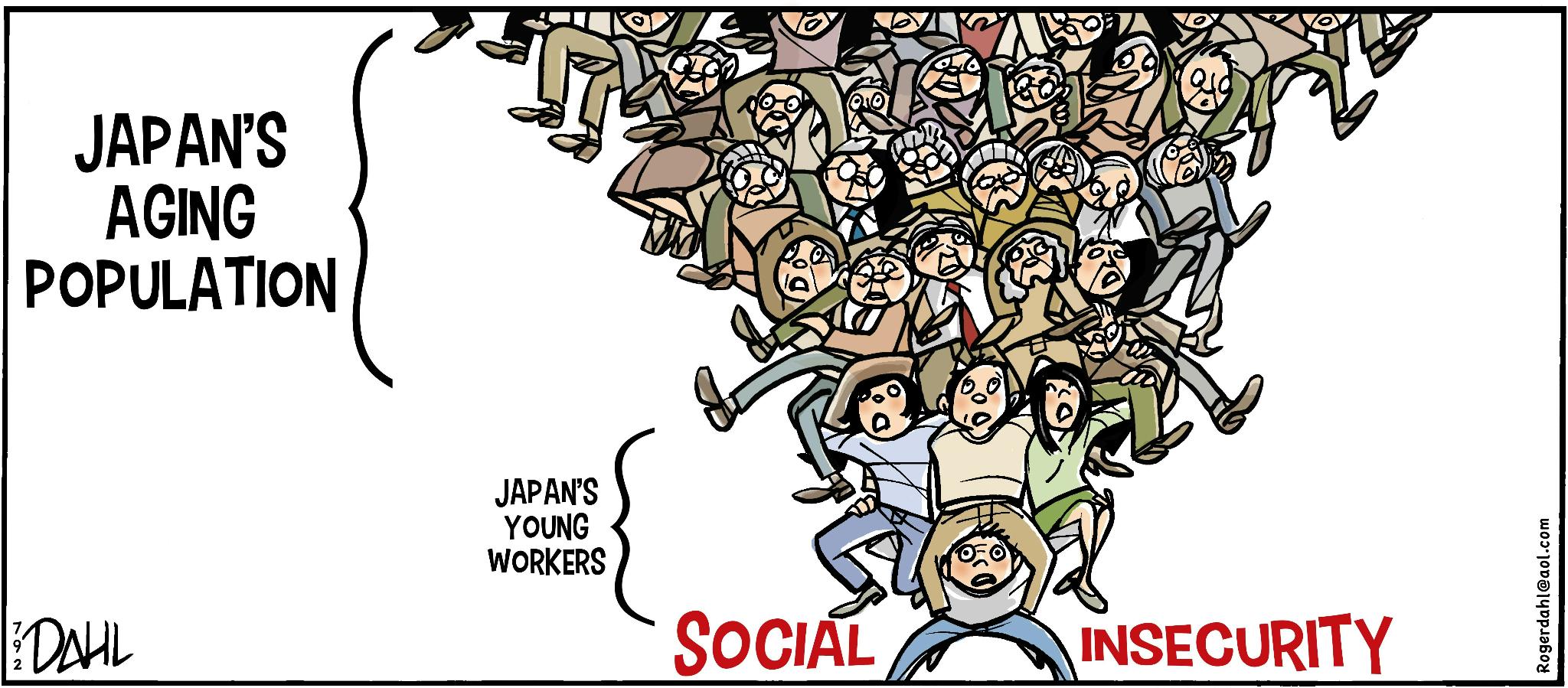Japan’s Aging Population

Japan is undergoing a profound demographic transformation, marked by the rapid ageing of its population. As of 2025, approximately 29.1% of Japan’s citizens are aged 65 or older, a figure projected to increase to nearly 38% by 2060 (World Bank, 2023; IPSS, 2023). This shift, driven by persistently low fertility rates and rising life expectancy, has far-reaching consequences for Japan’s economy, labour force, and social infrastructure.
Economically, the ageing population is contributing to a significant decline in the labour force. Despite policy efforts to encourage the participation of older individuals and women, the overall workforce has continued to shrink, placing downward pressure on productivity and GDP growth (OECD, 2024). Japan’s dependency ratio—the proportion of non-working individuals supported by the working-age population—is increasing rapidly. This demographic imbalance places growing strain on public finances, as social security expenditures now account for over one-third of annual government spending (Cabinet Office, 2023).
In response, the Japanese government has implemented a range of mitigation strategies. These include raising the retirement age, incentivising senior re-employment, and promoting the use of robotics and automation in sectors such as eldercare and manufacturing (OECD, 2024). Immigration policies have also been cautiously revised to attract foreign workers, particularly in industries facing acute labour shortages like construction and nursing (IMF, 2023).
However, these measures are constrained by several structural and cultural challenges. Resistance to large-scale immigration remains deeply embedded in Japanese society, while the adoption of automation technologies is uneven across industries. Furthermore, an over-reliance on older workers raises concerns about long-term productivity and occupational safety (Bloomberg, 2023).
Looking ahead, Japan’s demographic trajectory necessitates comprehensive reform. Urban planning must evolve to serve ageing populations with reduced mobility. Healthcare systems must pivot from acute interventions to chronic disease management and preventative care. Education and employment structures will need to support lifelong learning and flexible retirement pathways (OECD, 2024).
Japan’s experience offers valuable insights for other ageing societies. While policy adaptations have tempered some of the economic fallout, the underlying demographic pressures remain acute. Without sustained structural reform, the aging population threatens to undermine Japan’s long-term economic stability and global competitiveness.
– By Shoken Tsurumaru
References
- Bloomberg. (2023, August 15). Japan’s shrinking workforce is weighing on its economy.
https://www.bloomberg.com/news/articles/2023-08-15/japan-s-shrinking-workforce-is-weighing-on-its-economy - Cabinet Office, Government of Japan. (2023). Annual Report on the Ageing Society (Summary).
https://www8.cao.go.jp/kourei/whitepaper/index-w.html - IMF. (2023). Japan: Staff Concluding Statement of the 2023 Article IV Mission.
https://www.imf.org/en/News/Articles/2023/06/13/japan-staff-concluding-statement-of-the-2023-article-iv-mission - IPSS. (2023). Population projections for Japan (2023).
https://www.ipss.go.jp/index-e.asp - OECD. (2024). OECD Economic Surveys: Japan 2024.
https://www.oecd.org/economy/japan-economic-snapshot/ - World Bank. (2023). Japan – Population ages 65 and above (% of total population).
https://data.worldbank.org/indicator/SP.POP.65UP.TO.ZS?locations=JP
